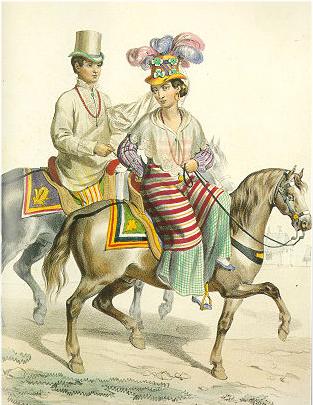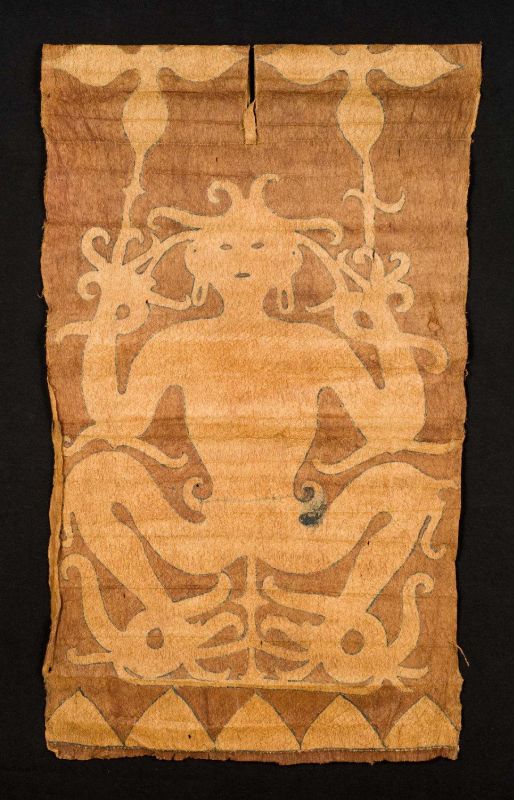|
Malong
The malong is a traditional Filipino-Bangsamoro rectangular or tube-like wraparound skirt bearing a variety of geometric or okir designs. The malong is traditionally used as a garment by both men and women of the numerous ethnic groups in the mainland Mindanao and parts of the Sulu Archipelago. They are wrapped around at waist or chest-height and secured by tucked ends, with belts of braided material or other pieces of cloth, or are knotted over one shoulder. They were traditionally hand-woven, with the patterns usually distinctive to a particular ethnic group. However, modern malong are usually machine-made or even imported, with patterns that mimic the traditional local designs. Description Handwoven malongs are made by Maranao, Maguindanaon, and T'boli weavers on a backstrap loom. The pattern or style of the malong may indicate the weaver's tribal origin, such as the Maranao ''malong landap''. Very rare malong designs and styles can indicate the village in which the malon ... [...More Info...] [...Related Items...] OR: [Wikipedia] [Google] [Baidu] |
Sarong
A sarong or a sarung (, ) is a large tube or length of textile, fabric, often wrapped around the waist, worn in Southeast Asia, South Asia, Western Asia, Northern Africa, East Africa, West Africa, and on many Pacific islands. The fabric often employs woven plaid (pattern), plaid or checkered patterns or may be brightly colored by means of batik or ikat dyeing. Many modern sarongs have printed designs, often depicting animals or plants. Different types of sarongs are worn in different places in the world, notably the lungi in the Indian subcontinent and the izaar in the Arabian Peninsula. The unisex sarong is typically longer than the men's lungi. Etymology The term ''sarong'' is a loanword from Malay language, Malay (, old spelling: ), meaning 'to cover' or 'to sheath'. It was first used in 1834 referring to the skirt-like garment of the Malays (ethnic group), Malays. ''Sarong'' is the older Malay spelling, still used colloquially and persists in English, while () is the sta ... [...More Info...] [...Related Items...] OR: [Wikipedia] [Google] [Baidu] |
Patadyong
The patadyong (, also called patadyung, patadjong, habol, or habul), is an indigenous rectangular or tube-like wraparound skirt worn by both men and women of the Visayas and the Sulu Archipelago of the Philippines, similar to the Malong, or Sarong. It was also historically worn in parts of Luzon like Pampanga and Sorsogon. In the History of the Philippines (900–1565), precolonial Philippines, it was usually worn with a ''barong tagalog, barú'' or ''bayú'', a simple collar-less shirt or jacket with close-fitting long sleeves. During the Spanish period, this evolved into the ''kimona'', a variant of the baro't saya worn by Christianized lowland Visayans consisting of a loose translucent blouse, an undershirt, and a patadyong or a patadyong-patterned skirt. The patadyong is identical to the malong used in mainland Mindanao, but is longer than the tapis (Philippine clothing), tapis of Luzon; it is also identical to the sarong of neighboring Indonesia, Brunei, and Malaysia, for w ... [...More Info...] [...Related Items...] OR: [Wikipedia] [Google] [Baidu] |
Okir
Okir, also spelled okil or ukkil, is the term for rectilinear and curvilinear plant-based designs and folk motifs that can be usually found among the Moro and Lumad people of the Southern Philippines, as well as parts of Sabah. It is particularly associated with the artwork of the Maranao and Sama (Badjao) tribes, although it can also be found to a lesser extent among the Maguindanao, Iranun, Tausug, Yakan, and Lumad groups. The design elements vary among these ethnic groups, with the greatest refinement being found among the Maranao. History The origins of ''okir'' are pre-Islamic. They are believed to have originated from the much earlier ''okil'' or ''okil-okil'' decorative carving traditions of the Sama (Badjao) people, which are often highly individualistic and rectilinear. The Sama are master carvers, and they made lavish decorations on ritual animistic objects, grave markers (both in wood and stone), and their houseboats. These precursor forms of the ''okir'' d ... [...More Info...] [...Related Items...] OR: [Wikipedia] [Google] [Baidu] |
Tapis (Philippine Clothing)
Tapis across various cultures in the Philippines may generally refer to a single, rectangular piece of cloth one wraps around oneself as clothing, but is also the term for a colorful, hand-woven wraparound skirt common in the pre-colonial period, and which is still used today as part of the María Clara gown and by culturally conservative tribes. The tapis worn by the Cordilleran women of Northern Luzon, known locally as the ''alampay'', are the most prominent surviving example. It is worn by wrapping the cloth around one's waist and holding the ends together by means of a tightly tied sash. It generally reaches down to the knees. The woven pattern of a tapis describes the culture and temperament of the wearer's tribe. Broader usage (verb) Another use of the term, as a verb, simply means to wrap a piece of cloth around one's body to cover it up. A person who does so is said to be ('putting on a tapis'). This usage of the term does not require that the piece of cloth be ... [...More Info...] [...Related Items...] OR: [Wikipedia] [Google] [Baidu] |
Parangal Dance Co
Parangal (; also known as Partagal and Palangar) is a village in Kuhsarat Rural District, in the Central District of Minudasht County, Golestan Province, Iran Iran, officially the Islamic Republic of Iran (IRI) and also known as Persia, is a country in West Asia. It borders Iraq to the west, Turkey, Azerbaijan, and Armenia to the northwest, the Caspian Sea to the north, Turkmenistan to the nort .... At the 2006 census, its population was 677, in 180 families. References Populated places in Minudasht County {{Minudasht-geo-stub ... [...More Info...] [...Related Items...] OR: [Wikipedia] [Google] [Baidu] |
Austronesian Peoples
The Austronesian people, sometimes referred to as Austronesian-speaking peoples, are a large group of peoples who have settled in Taiwan, maritime Southeast Asia, parts of mainland Southeast Asia, Micronesia, coastal New Guinea, Island Melanesia, Polynesia, and Madagascar that speak Austronesian languages. They also include indigenous ethnic minorities in Vietnam, Cambodia, Myanmar, Thailand, Hainan, the Comoros, and the Torres Strait Islands. The nations and territories predominantly populated by Austronesian-speaking peoples are sometimes known collectively as Austronesia. The group originated from a prehistoric seaborne migration, known as the Austronesian expansion, from Taiwan, circa 3000 to 1500 BCE. Austronesians reached the Batanes Islands in the northernmost Philippines by around 2200 BCE. They used sails some time before 2000 BCE. In conjunction with their use of other maritime technologies (notably catamarans, outrigger boats, lashed-lug boats, and the crab ... [...More Info...] [...Related Items...] OR: [Wikipedia] [Google] [Baidu] |
Barkcloth
Barkcloth or bark cloth is a versatile material that was once common in Asia, Africa, and the Pacific. Barkcloth comes primarily from trees of the family Moraceae, including '' Broussonetia papyrifera'', '' Artocarpus altilis'', '' Artocarpus tamaran'', and '' Ficus natalensis''. It is made by beating sodden strips of the fibrous inner bark of these trees into sheets, which are then finished into a variety of items. Many texts that mention "paper clothing" are actually referring to barkcloth. Some modern cotton-based fabrics are also named "barkcloth" for their resemblance to these traditional fabrics. Traditional Austronesia Before the development of woven textiles, barkcloth made from trees belonging to the mulberry family ( Moraceae) were an important aspect of the pre-Austronesian and Austronesian material culture during the Neolithic period. Stone barkcloth beaters, in particular, are considered part of the "Austronesian toolkit." They have been found in abundance i ... [...More Info...] [...Related Items...] OR: [Wikipedia] [Google] [Baidu] |
Indonesia
Indonesia, officially the Republic of Indonesia, is a country in Southeast Asia and Oceania, between the Indian Ocean, Indian and Pacific Ocean, Pacific oceans. Comprising over List of islands of Indonesia, 17,000 islands, including Sumatra, Java, Sulawesi, and parts of Borneo and New Guinea, Indonesia is the world's largest archipelagic state and the List of countries and dependencies by area, 14th-largest country by area, at . With over 280 million people, Indonesia is the world's List of countries and dependencies by population, fourth-most-populous country and the most populous Islam by country, Muslim-majority country. Java, the world's List of islands by population, most populous island, is home to more than half of the country's population. Indonesia operates as a Presidential system, presidential republic with an elected People's Consultative Assembly, legislature and consists of Provinces of Indonesia, 38 provinces, nine of which have Autonomous administrative divisi ... [...More Info...] [...Related Items...] OR: [Wikipedia] [Google] [Baidu] |
East Timor
Timor-Leste, also known as East Timor, officially the Democratic Republic of Timor-Leste, is a country in Southeast Asia. It comprises the eastern half of the island of Timor, the coastal exclave of Oecusse in the island's northwest, and the outer islands of Atauro and Jaco. Timor-Leste shares a land border with Indonesia to the west, and Australia is the country's southern neighbour, across the Timor Sea. The country's size is . Dili, on the north coast of Timor, is its capital and largest city. Timor was settled over time by various Papuan and Austronesian peoples, which created a diverse mix of cultures and languages linked to both Southeast Asia and Melanesia. East Timor came under Portuguese influence in the sixteenth century, remaining a Portuguese colony until 1975. Internal conflict preceded a unilateral declaration of independence and an Indonesian invasion and annexation. The subsequent Indonesian occupation was characterised by extreme abuses of human ... [...More Info...] [...Related Items...] OR: [Wikipedia] [Google] [Baidu] |
Brunei
Brunei, officially Brunei Darussalam, is a country in Southeast Asia, situated on the northern coast of the island of Borneo. Apart from its coastline on the South China Sea, it is completely surrounded by the Malaysian state of Sarawak, with its territory bifurcated by the Sarawak district of Limbang District, Limbang. Brunei is the only sovereign state entirely on Borneo; the remainder of the island is divided between its multi-landmass neighbours of Malaysia and Indonesia. , the country had a population of 455,858, of whom approximately 180,000 resided in the Capital city, capital and largest city of Bandar Seri Begawan. Its official language is Malay language, Malay, and Islam is the state religion of the country, although Religion in Brunei, other religions are nominally tolerated. The government of Brunei is an absolute monarchy ruled by the Sultan, and it implements a fusion of English common law and jurisprudence inspired by Islam, including sharia. At the Bruneian Emp ... [...More Info...] [...Related Items...] OR: [Wikipedia] [Google] [Baidu] |
Malaysia
Malaysia is a country in Southeast Asia. Featuring the Tanjung Piai, southernmost point of continental Eurasia, it is a federation, federal constitutional monarchy consisting of States and federal territories of Malaysia, 13 states and three federal territories, separated by the South China Sea into two regions: Peninsular Malaysia on the Mainland Southeast Asia, Indochinese Peninsula and East Malaysia on the island of Borneo. Peninsular Malaysia shares land and maritime Malaysia–Thailand border, borders with Thailand, as well as maritime borders with Singapore, Vietnam, and Indonesia; East Malaysia shares land borders with Brunei and Indonesia, and a maritime border with the Philippines and Vietnam. Kuala Lumpur is the country's national capital, List of cities and towns in Malaysia by population, largest city, and the seat of the Parliament of Malaysia, legislative branch of the Government of Malaysia, federal government, while Putrajaya is the federal administrative capi ... [...More Info...] [...Related Items...] OR: [Wikipedia] [Google] [Baidu] |




